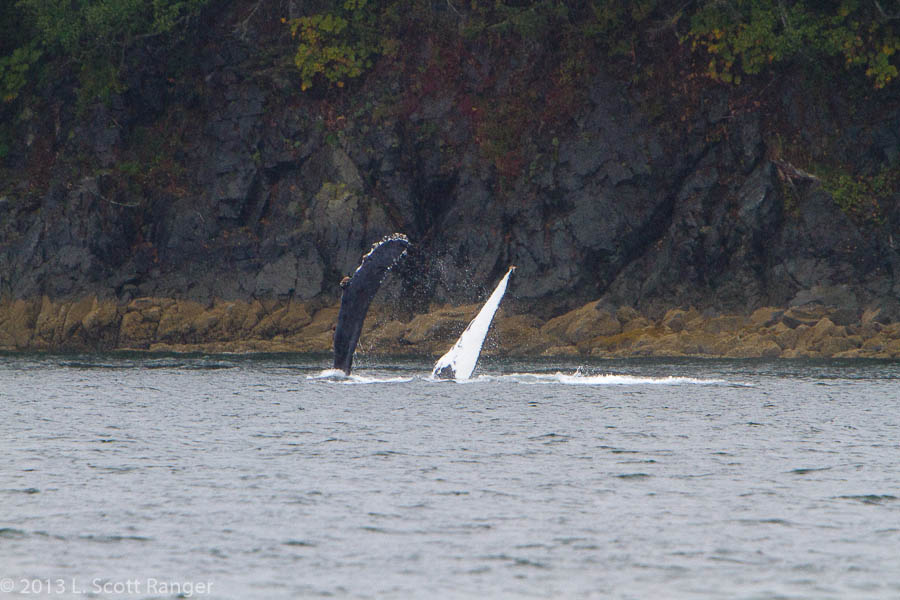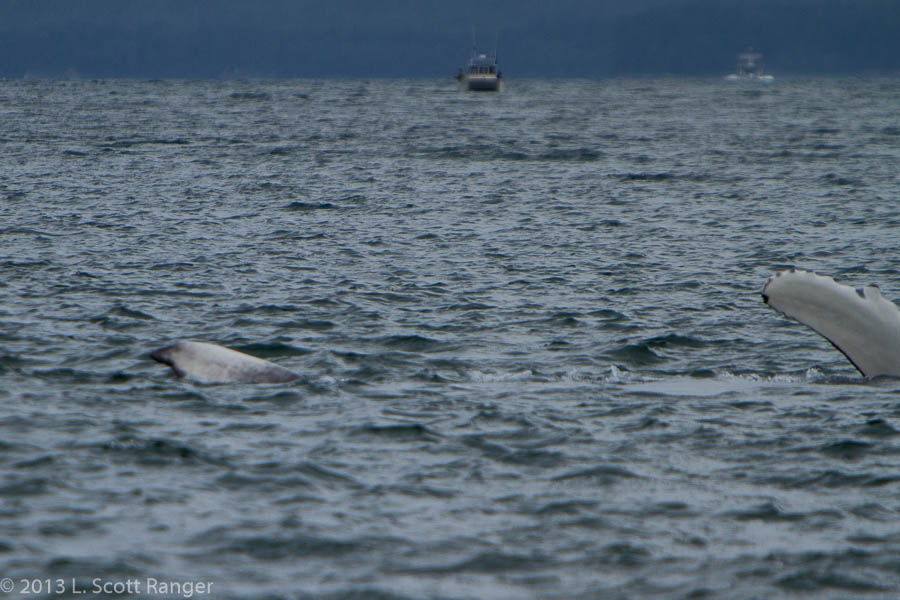Backstroke
Also called inverted posture or belly up. Here whales 1879, Sasha (left) and 2070, Barnacles (right), are doing some impressive backstroking. As with the side fluke, it is most easily explained as swimming upside down. Full adult humpbacks give an impressive show when swimming on their backs close to the surface lifting their 15-foot long pectoral fins out of the water. Swimming this way is always short-lived, usually less than five minutes and often no more than a minute. I interpret this brief behavior as evidence that it is not the preferred method of swimming. The question of why the whale would do this is entirely open and every reference I have found uses sheer speculation to explain it. I prefer just to describe it and enjoy the action when I see it.
Here, 1538’s 2013 calf is doing the backstroke on July 2. Comparing how this juvenile does with the adults is dramatic. The pectoral fins just barely rise out of the water and almost never straight up. The left photo shows the left fluke so the baby is actually swimming on her side. The right photo shows part of the side. The simplest explanation of this behavior is that the youngster simply hasn’t developed the skill to do the backstroke yet and is exploring what its body can do.



